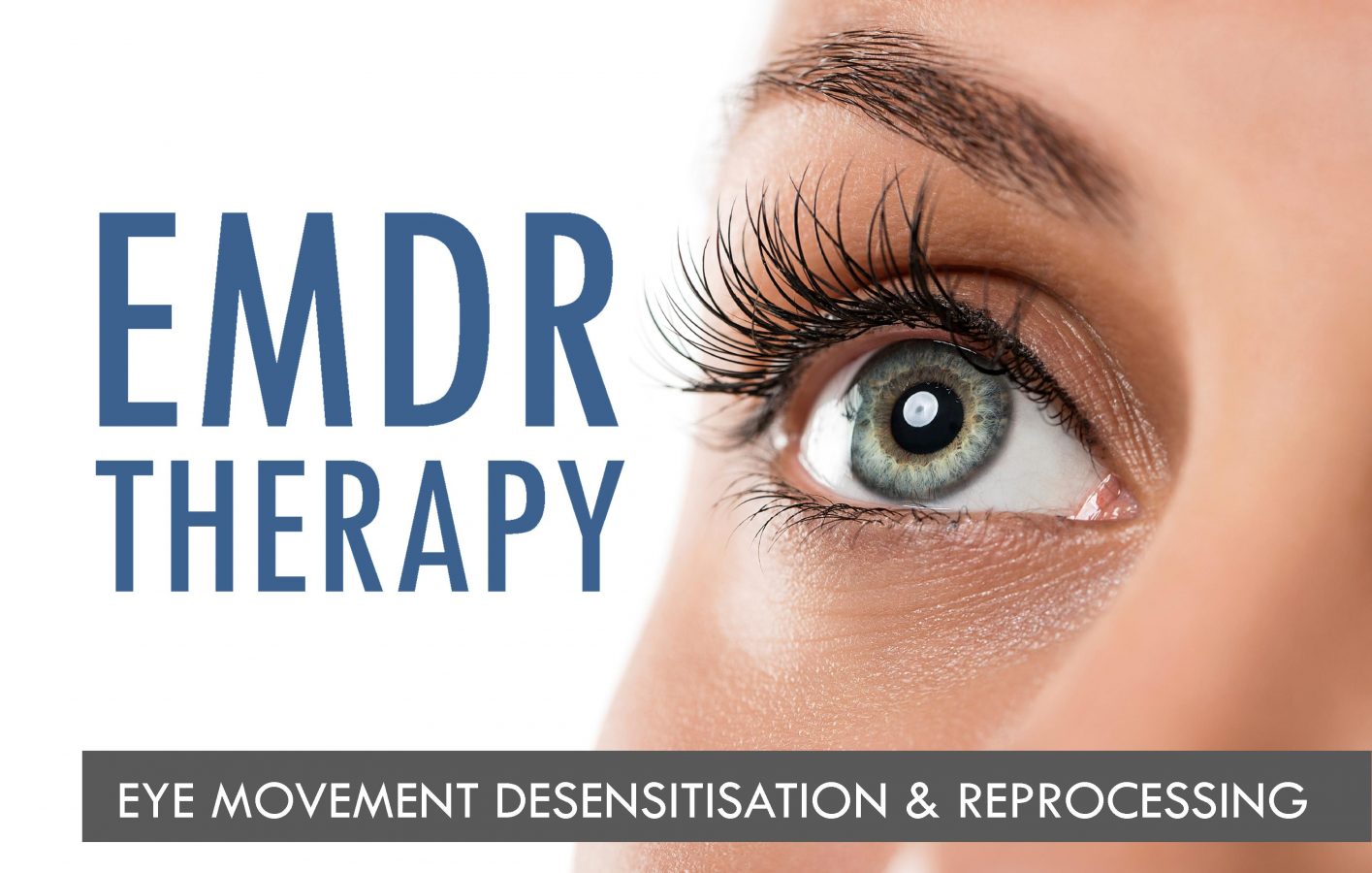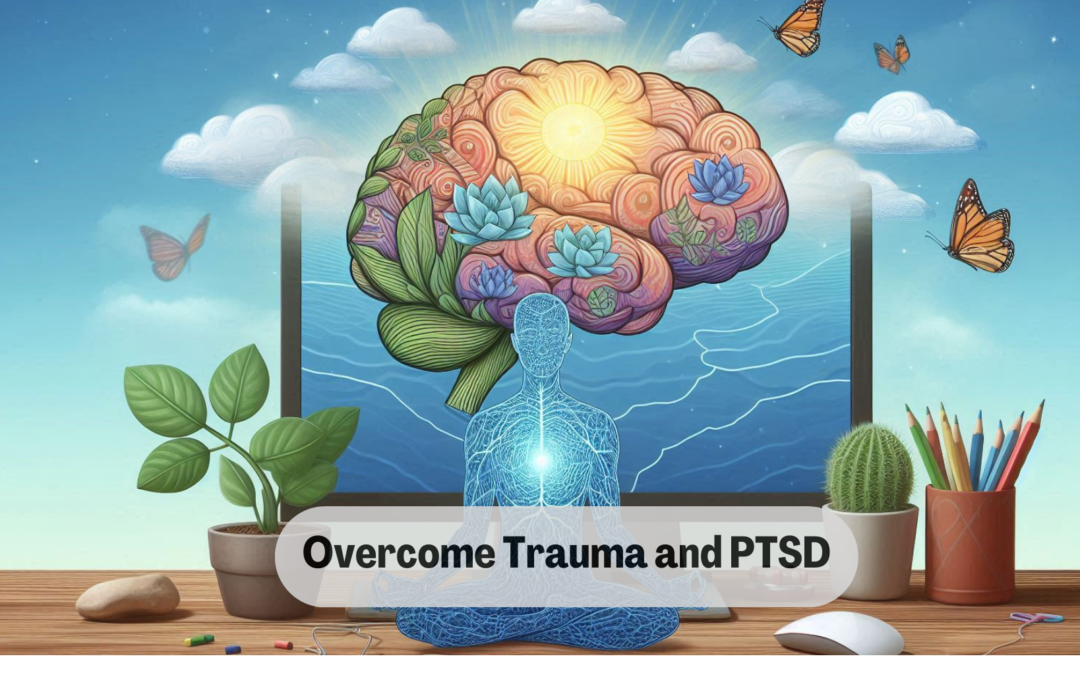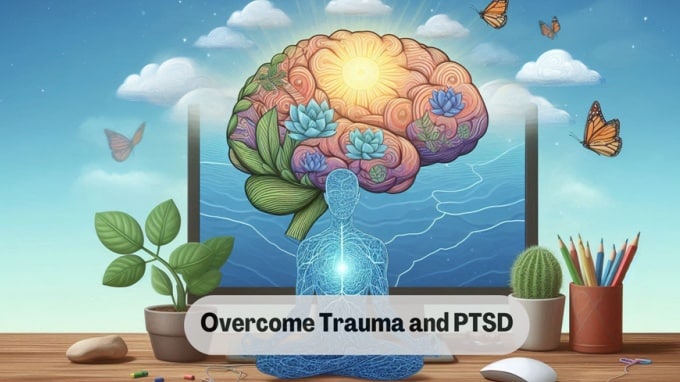The Hidden Wounds of Trauma
Trauma affects far more people than many realize, and often its impact goes unnoticed for years. It’s not just the major, life-altering events like war, assault, or natural disasters that leave emotional scars; seemingly smaller, everyday experiences—like childhood neglect, bullying, or emotional manipulation—can also create deep, lasting trauma.
Many people, both those who suffer and those who care for them, may not even recognize the symptoms. If you’ve noticed that someone close to you seems stuck, overly reactive, or emotionally distant, there’s a chance that trauma could be at play. If you’re not sure take the ‘How to know if You Have PTSD’ test.
In this blog, we’ll explore trauma, Post-Traumatic Stress Disorder (PTSD), and a leading therapeutic approach called Eye Movement Desensitization and Reprocessing (EMDR).
By understanding these concepts, you’ll be better equipped to recognise trauma, whether in yourself, a loved one, or in clients if you’re a professional.
In the end, you’ll find a pathway to an online course that dives deeper into this complex subject, offering tools for further exploration and healing.
What is Trauma?
Trauma can be defined as a deeply distressing or disturbing experience. However, the definition is not confined to catastrophic events. Trauma can also result from repeated exposure to neglect, emotional abuse, or even witnessing violence.
What may seem like a minor or passing event to one person can profoundly affect another, particularly if they lack the support to cope with it.
Trauma affects how the brain processes information and experiences. It can shift how a person feels about themselves and their environment, leading to lasting emotional, psychological, and even physical symptoms.
Some common signs of trauma include:
- Hypervigilance (being constantly on edge)
- Avoidance of certain people, places, or situations
- Emotional numbness – Take the Emotional Intelligence Test
- Unexplained anger or irritability
- Flashbacks or nightmares
- Difficulty forming or maintaining relationships
If someone you know is exhibiting these symptoms, and there doesn’t seem to be a clear reason why, unresolved trauma could be the root cause. Sometimes, the trauma is from something as subtle as emotional manipulation during childhood, or as significant as a car accident. It may even be from trauma that has been experienced in the family in previous generations.
It’s essential to understand the vast scope of trauma’s potential sources. By expanding your awareness, you can provide more nuanced support to those struggling with unrecognised trauma.

“Unlike other forms of psychological disorders, the core issue in trauma is reality.”
―
PTSD: Trauma’s Ongoing Legacy
While trauma impacts nearly everyone at some point, not everyone develops Post-Traumatic Stress Disorder (PTSD). PTSD occurs when someone has experienced a traumatic event and continues to feel the impact for months or even years afterward.
Their brain remains in a heightened state of alertness or fear, long after the immediate danger has passed.
Symptoms of PTSD often include:
- Intrusive thoughts, such as flashbacks or unwanted memories of the event
- Avoidance of places, people, or situations that remind them of the trauma
- Negative changes in thinking and mood, such as feeling detached or struggling with self-esteem
- Heightened arousal symptoms, such as insomnia, irritability, or difficulty concentrating
It’s easy to miss the connection between someone’s ongoing struggles and a past traumatic event. For example, a car accident or sudden loss might have seemed to “end” months ago, but if the person continues to experience fear, anxiety, or withdrawal, PTSD might be keeping them trapped in the past. This can be incredibly isolating and confusing for the sufferer.
PTSD is a multifaceted condition that manifests differently from one person to the next. Recognising the signs and offering appropriate interventions can make a significant difference in a person’s life. Therapy often involves addressing both the memories and the emotional reactions the trauma triggers.
How EMDR Therapy Can Help Heal Trauma and PTSD
One of the most effective treatments for trauma and PTSD is Eye Movement Desensitization and Reprocessing (EMDR). Developed by psychologist Francine Shapiro in the 1980s, EMDR focuses on helping the brain process trauma in a healthier way.
When we experience trauma, the brain can become overwhelmed and fail to fully process the event, leaving memories “stuck.” These stuck memories are what often cause flashbacks, nightmares, and ongoing distress.
EMDR uses bilateral stimulation (usually guided eye movements, though tapping or sounds can also be used) to help the brain reprocess these traumatic memories. The result? The memory loses its emotional charge, becoming less distressing over time.
How EMDR Works:
- Preparation: The therapist works with the client to identify specific memories or triggers that are causing distress.
- Processing: The client focuses on these memories while following the therapist’s hand movements, engaging in bilateral stimulation. This stimulates both hemispheres of the brain, which is believed to mimic the brain’s natural healing process during REM sleep.
- Desensitization: Over time, the emotional intensity associated with the memory decreases, and the client can begin to reframe the experience in a more constructive light.
Research has shown that EMDR can help significantly reduce the symptoms of PTSD, often in fewer sessions than traditional talk therapy alone.
If you or someone you know is stuck in a cycle of distress, EMDR could be a powerful tool for healing. It’s not about talking endlessly about the trauma but instead about moving past it by reprocessing the way your brain holds onto it.
EMDR is becoming a go-to method for many trauma therapists because of its effectiveness and relatively short treatment time. If you’re looking to deepen your therapeutic toolkit, understanding and potentially training in EMDR could be invaluable.

Recognising Trauma in Ourselves and Others
Trauma isn’t always easy to spot, even when it’s profoundly affecting someone’s life. Sometimes it looks like someone withdrawing from loved ones, avoiding certain situations, or reacting more intensely to stress than others.
Other times, it manifests as physical symptoms like headaches, stomach problems, or chronic fatigue that seem to have no medical cause.
If you’re reading this and thinking of someone you care about, or even recognising some of these signs in yourself, it’s important to remember that trauma can be healed. There are many paths to recovery, and one of the most effective is learning how to recognise and process these past experiences with the help of a professional.
Ready to Learn More? Join Our Online Course on Trauma and PTSD
If you want to dive deeper into understanding trauma, PTSD, and therapeutic techniques like EMDR, we invite you to explore our online course on trauma and PTSD.
Whether you’re a concerned family member looking to better support a loved one or a professional seeking advanced training, this course offers comprehensive insights and practical tools to help you navigate the complexities of trauma recovery.
Learn more about the course here and take the next step towards healing and understanding, or contact us for more information.
A Path Toward Healing
Trauma, whether from a single event, a lifetime of smaller wounds, or inherited from past generations, can leave a lasting impact on both the mind and body. The good news is that there is hope for recovery, with treatments like EMDR offering powerful solutions.
By recognising trauma’s effects, learning about treatments, and seeking professional guidance, you or someone you care about can move toward healing and a more fulfilling life.
Dr Tom Barber is a #1 bestselling author, integrative and existential psychotherapist and coach, supervisor, researcher, speaker, and co-founder of Self Help School. His work has spanned nearing 30 years, in which he has focussed on helping people all over the world to improve their knowledge and understanding of their psychological worlds. Tom regularly delivers courses and lectures in the UK, USA, Canada, Mexico, and across Europe. In addition, he maintains a private therapy and coaching consultancy from his base in Essex, and online.


